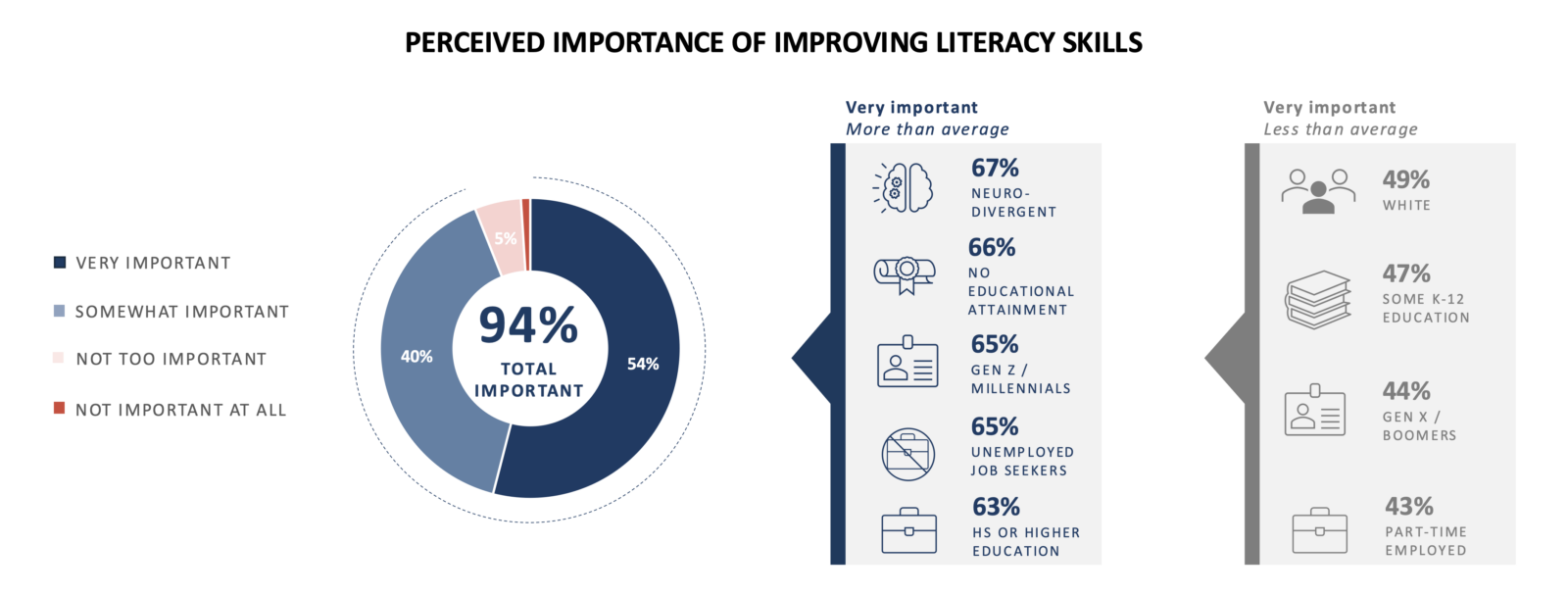
Breaking Barriers to Adult Literacy Access: Insights from Adults with Low Literacy Across the United States
By the Adult Literacy and Learning Impact Network and FTI Consulting
Low literacy is at the root of many challenges, yet it remains a largely invisible issue. According to the latest Survey of Adult Skills, about 28% of adults ages 16-65 in the United States—an estimated 58.9 million people—can read only simple, short sentences, scoring at the lowest level of literacy. Low literacy is not merely a social concern but also has vast implications for the workforce and economy, as well as health, community safety, and educational attainment more broadly.
But what do adults with low literacy skills need, want, and aspire to achieve? To better understand the experiences and perspectives of adults with low literacy, as well as the demand for literacy services, ALL IN and FTI Consulting partnered to field a survey of 2,000 adults with low literacy across the United States, conducted online, by phone, and through text messaging, with the option to complete the survey in English or Spanish. Our research shows that adults with low literacy have overwhelmingly positive perceptions of learning, recognizing its potential to build confidence and improve literacy skills in work and in life.
Nearly every adult surveyed (94% of respondents) recognized the value of education and the importance of improving their skills. Adults without a high school diploma, as well as younger learners and job seekers, were particularly likely to say that improving literacy skills is very important.

Most were unfamiliar with adult education and training programs in their community. They described barriers to skills development, especially the perceived cost of services, even though the vast majority of adult education and career training programs are free or low-cost.
Key Takeaways:
- Knowledge of adult learning programs is low, but interest is high
- Adults with low literacy seek self-confidence through education
- Potential learners favor flexible classroom options to accommodate their needs
Our new report, Breaking Barriers to Adult Literacy Access: Insights from Adults with Low Literacy Across the United States, places adults with low literacy at the center of our efforts to design and deliver adult education services, including specific kinds of skills and learning modalities that they say they need to succeed.
We hope this study will empower local education and workforce providers with learner-informed, evidence-based strategies to 1) more effectively reach and support adults with low literacy, and 2) communicate the value of their work to funders for greater investment and community-level impact.
